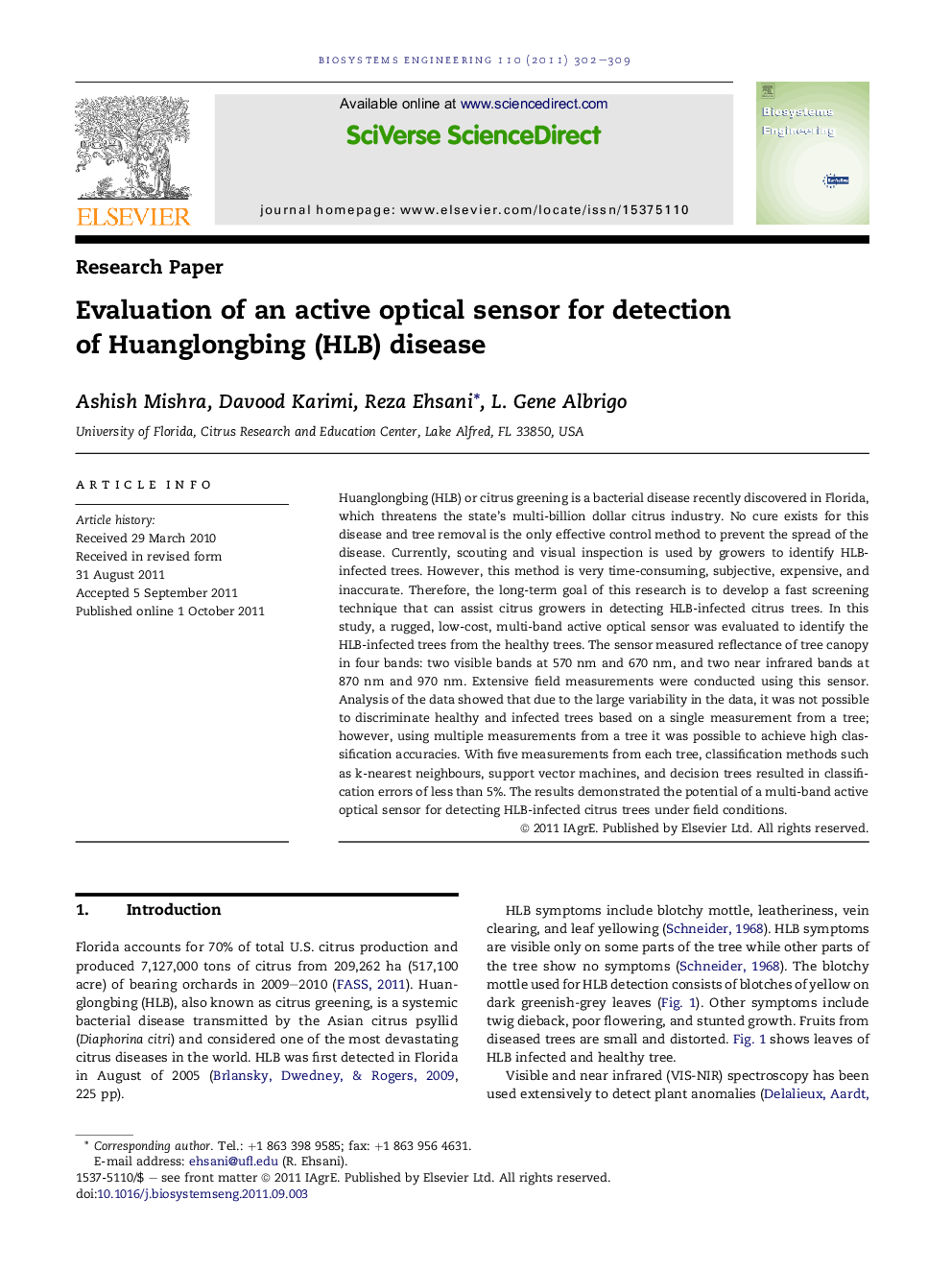| Article ID | Journal | Published Year | Pages | File Type |
|---|---|---|---|---|
| 1711604 | Biosystems Engineering | 2011 | 8 Pages |
Huanglongbing (HLB) or citrus greening is a bacterial disease recently discovered in Florida, which threatens the state’s multi-billion dollar citrus industry. No cure exists for this disease and tree removal is the only effective control method to prevent the spread of the disease. Currently, scouting and visual inspection is used by growers to identify HLB-infected trees. However, this method is very time-consuming, subjective, expensive, and inaccurate. Therefore, the long-term goal of this research is to develop a fast screening technique that can assist citrus growers in detecting HLB-infected citrus trees. In this study, a rugged, low-cost, multi-band active optical sensor was evaluated to identify the HLB-infected trees from the healthy trees. The sensor measured reflectance of tree canopy in four bands: two visible bands at 570 nm and 670 nm, and two near infrared bands at 870 nm and 970 nm. Extensive field measurements were conducted using this sensor. Analysis of the data showed that due to the large variability in the data, it was not possible to discriminate healthy and infected trees based on a single measurement from a tree; however, using multiple measurements from a tree it was possible to achieve high classification accuracies. With five measurements from each tree, classification methods such as k-nearest neighbours, support vector machines, and decision trees resulted in classification errors of less than 5%. The results demonstrated the potential of a multi-band active optical sensor for detecting HLB-infected citrus trees under field conditions.
► Scouting for Huanglongbing (HLB) detection is time-consuming and expensive. ► A rugged multi-band active optical sensor was evaluated to monitor citrus trees. ► The classification accuracy of five different statistical algorithms was compared. ► KNN, SVM and decision trees yielded classification errors of <5%. ► Potential of optical sensor for detecting HLB in field conditions was demonstrated.
